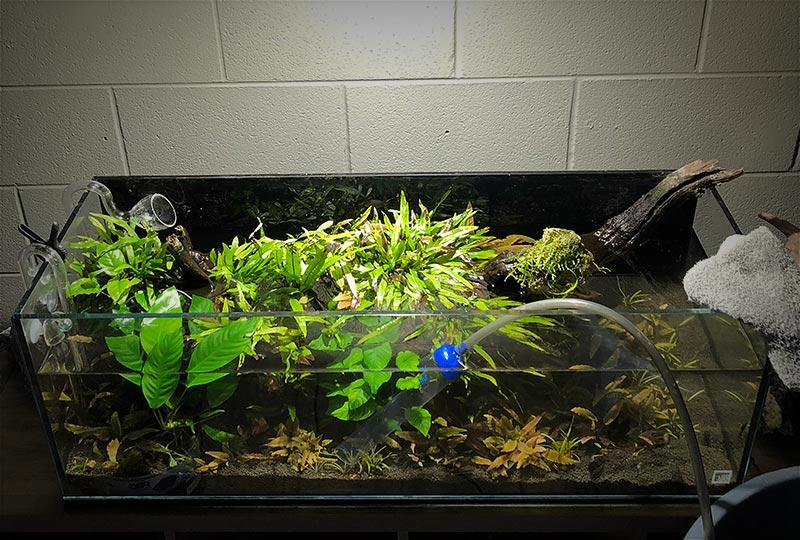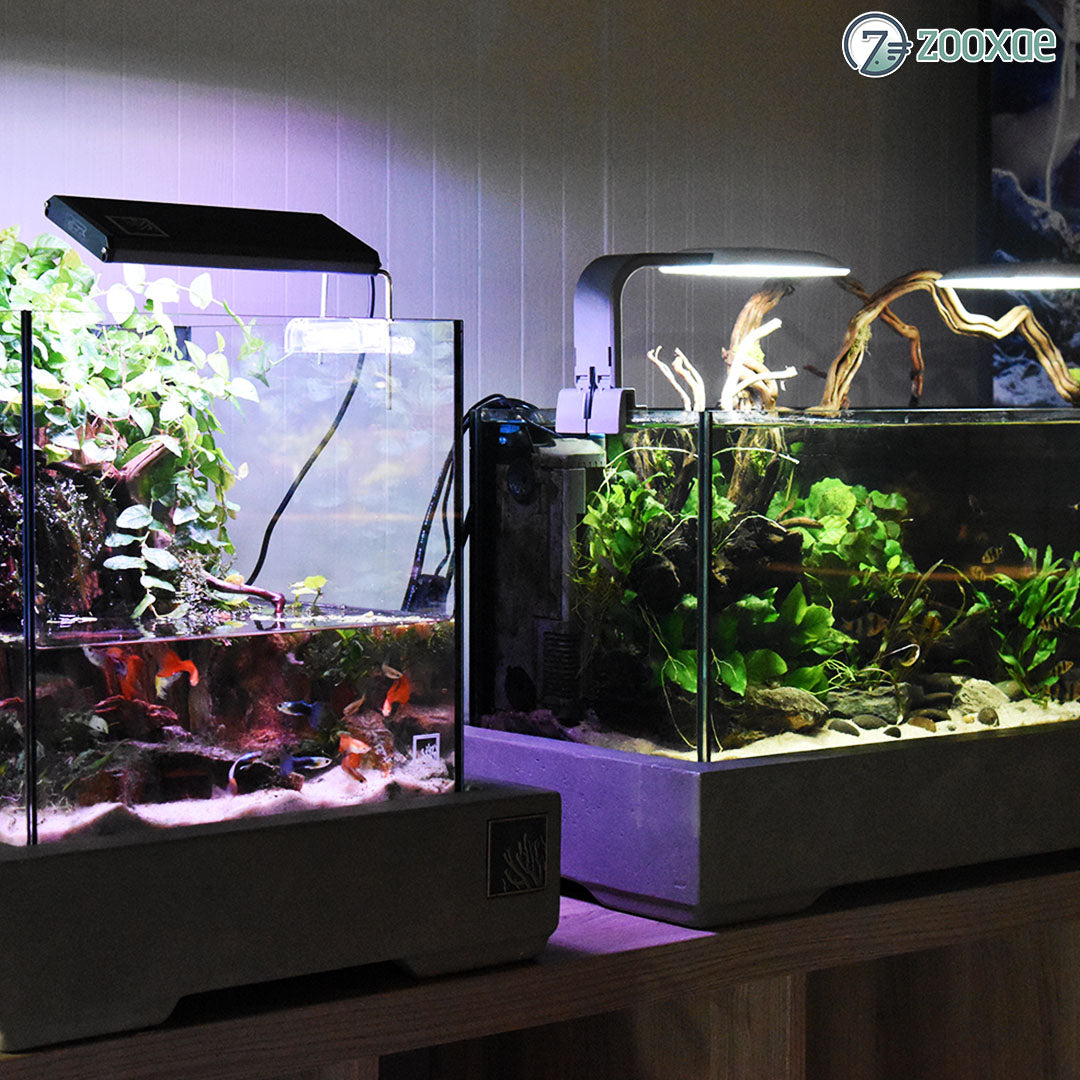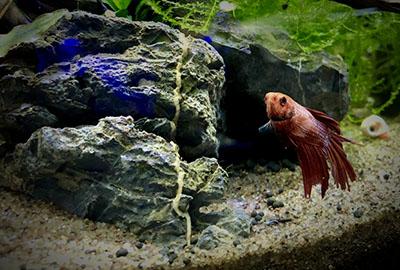
A clean aquarium not only has aesthetic importance, it is also vital to the health of your fish. Maintaining the cleanliness of your aquarium does not have to be a chore with these clever hacks.
HACKS TO PREVENT ALGAE GROWTH
- Keep your aquarium out of direct sunlight as too much light promotes algae growth. Decrease the length of time and the density with which your aquarium is illuminated. Up to ten hours of light every day is sufficient for aquariums with plants and less for fish-only tanks. You should use a timer or smart to turn the lights on and off daily.
- If you see algae on the glass, scrub the surface using algae scrub pads. To make cleaning a simple process, you can even go with a magnetic cleaning system like a Flipper, where you move the magnet on the outside of the glass to drag the scrub pad or scraper, on the inside of the glass.
- Why not have some natural cleaners in your aquarium? Add some algae-eating species like Plecostomus, otocinclus, Siamese Flying Fox in your freshwater aquarium, and Turbo snails and certain species of hermit crabs if you have a saltwater aquarium to make your aquarium algae-free. You must ensure that inhabitants are compatible with the other species in your aquarium.
- Aquarium plants like Hornwort act as natural filters as they absorb pollutants and carbon dioxide and saturate the aquarium with oxygen. You can even introduce floating plants in your aquarium; they block out bright light by spreading across the water surface and soak up excess nutrients, thereby starving the algae. It is a lifehack that beautifies your aquarium.
- Factors like polluted tap water, overfeeding, overstocking, failure to change water routinely, make the water rich in nutrients, phosphate, iron and nitrate, which can lead to algae growth. Learn how to prevent algae growth in Freshwater aquariums.
CLEANING AND FILTER HACKS
- Carbon is effective in maintaining the clarity of water and removing organic nutrients, phosphate. You can make a DIY carbon filter by wrapping a piece of carbon with a thin cloth and place it near the water pump. Rinse it once a week.
- Depending on the number of fish in the aquarium and their feeding habits, routine cleaning of filters is important, over time it becomes saturated with organic waste and debris.
- The gravel at the bottom of your aquarium is more than just a decoration. It also can trap dirt and debris. Use a gravel cleaner to keep gravel clean every time when changing water.
HACKS FOR WATER CHANGING
- It is important to monitor aquarium water parameters to ensure that your finned inhabitants live longer.
- It is important to test your water on a regular basis to ensure optimum water quality, aquarium water quality can be linked to almost any success or problem in your aquarium. Using a good quality test kit on a regular basis to test pH, KH, GH, nitrite, nitrate, and ammonia. Although testing can be time-consuming using products like the JBL PRO Scan or SR Aquaristik Speed test makes testing quicker and easier.
- You should never change all the water in one go. Changing fifteen to twenty five percent water every few weeks should be enough. Use a clear siphon hose to suck the water out. Hold it securely with a glass-safe clamp and changing the water will be much more convenient.
- You should never change all the water at one time, changing water on a regular basis is important to ensure consistent water quality. We recommend changing between 10 and 25% every two weeks. Use a gravel cleaner or clear hose to siphon out aquarium water. Products like the Python Water Changer makes it even easier.
- Do not refill the aquarium with tap water immediately after cleaning it. Usually, all tap water has chlorine in it which is harmful for fish. To remove it from the water, you can use a chlorine neutralizer or simply let the water sit in a container for a day and allow chlorine to disappear by itself before pouring it in the aquarium.
- Ensure that the new water is the same temperature as the water in the aquarium.
- Never refill an aquarium directly with tap water/ well water. Tap water contains chlorine, chloramine and heavy metals that will need to be neutralized with a good quality water conditioner. If you are using city water that contains chloramine, make sure your water conditioner also contains an ammonia neutralizer. Leaving water overnight will only dissipate chlorine and will still need to be conditioned before adding to the aquarium. Make sure to test the water temperature before re-adding water to the aquarium to ensure that it matches your aquarium temperature. Large temperature changes can be catastrophic.
HACKS TO KEEP YOUR FISH HEALTHY
- Check your fish every day to see if they have any infections, parasites, injuries.
- When you get new fish for your aquarium, quarantine them in a separate tank for a month so you can keep an eye on any diseases that could harm the rest of your fish.
When you purchase new fish, if possible, quarantine them in a separate tank for a few weeks before adding them to your main display. Always ask the store where you purchase the fish what water chemistry and temperature, they are currently keeping them at.




Leave a comment
This site is protected by hCaptcha and the hCaptcha Privacy Policy and Terms of Service apply.